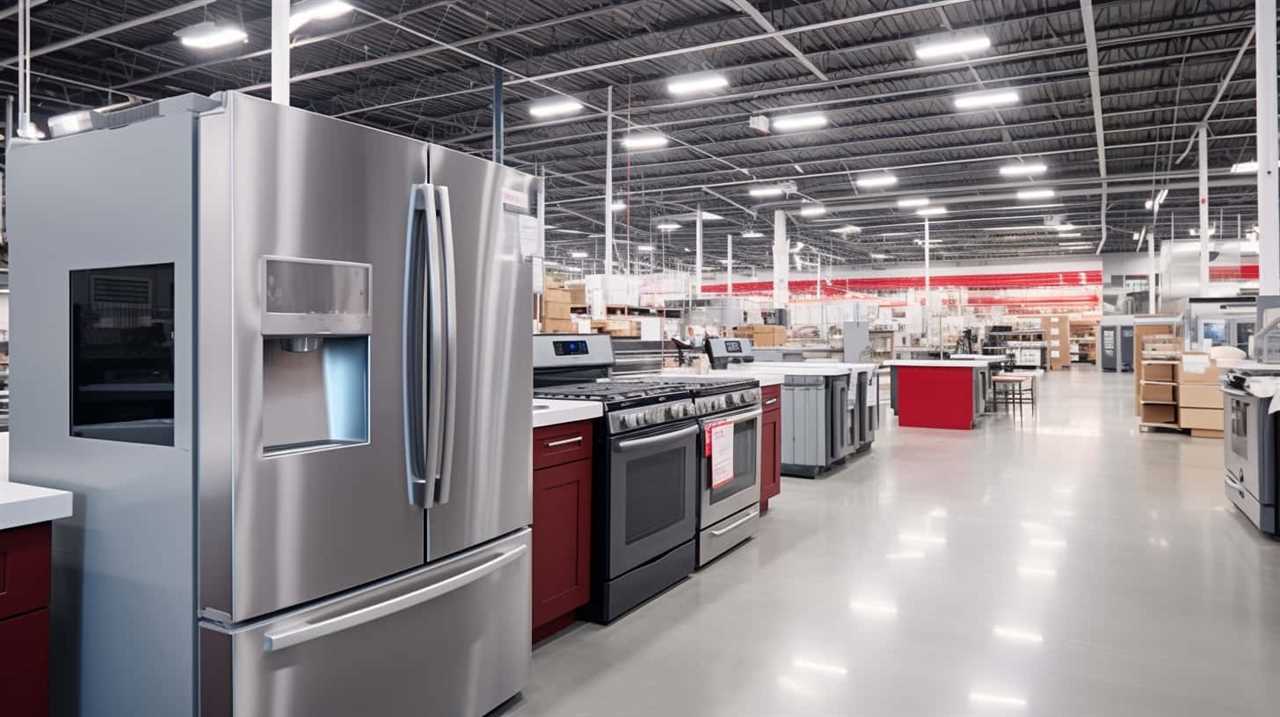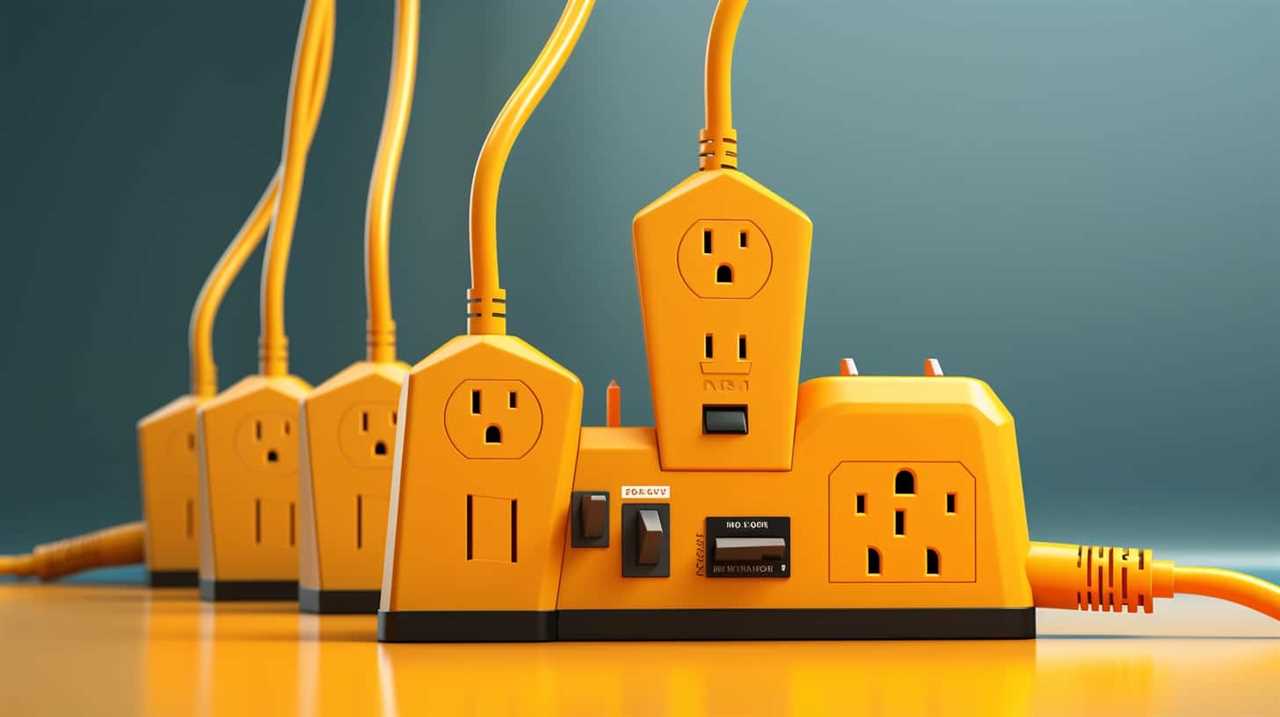
Ladies and gentlemen, brace yourselves for a mind-blowing exploration into the world of solid state storage.
In this article, we’ll be unraveling the mysteries surrounding these cutting-edge storage devices. We’ll delve into the inner workings of solid state drives (SSDs), uncover the advantages they offer, and compare them to traditional hard disk drives.
With a focus on technical mastery, we’ll even discuss NAND flash memory and how solid state storage can enhance your gaming experience and professional workstations.
Get ready to embrace the era of solid state storage!
Key Takeaways
- Solid state storage devices use integrated circuits to store data and do not have any moving parts like traditional hard drives.
- They offer faster access times, reduced latency, and increased reliability compared to traditional hard disk drives.
- SSDs consume less power, resulting in lower power consumption and longer battery life.
- Solid state storage devices include solid state drives (SSDs), USB flash drives, memory cards, and NAND flash memory.
What Is Solid State Storage
One of the most significant advancements in data storage technology is the emergence of solid state storage. Solid state storage refers to a type of storage device that uses integrated circuits to store data, as opposed to traditional mechanical hard drives that use spinning disks.
There are several advantages to using solid state storage. Firstly, they offer faster access times, resulting in improved performance and reduced latency. Additionally, solid state storage is more durable and reliable than traditional hard drives, as there are no moving parts that can break or fail.
However, there are also some disadvantages to consider. Solid state storage tends to be more expensive than traditional hard drives, and they generally have smaller storage capacities. Despite these drawbacks, the benefits of solid state storage make it an appealing option for many users.
In the next section, we’ll explore how solid state drives (SSDs) work.

How Do Solid State Drives (SSDs) Work
Now let’s delve into the inner workings of solid state drives (SSDs) and explore how they function. SSDs use a technology called NAND flash memory to store data. Unlike traditional hard disk drives (HDDs) that use spinning disks and mechanical components, SSDs have no moving parts. This makes them faster, more durable, and less prone to mechanical failures.
So how do SSDs store data? They use a grid of memory cells, each cell containing a floating gate transistor. These transistors can hold a charge, representing either a 0 or a 1. By controlling the flow of electricity to these cells, the SSD can read, write, and erase data.
One of the advantages of using SSDs is their speed. Since there are no moving parts, data can be accessed almost instantly, resulting in faster boot times, file transfers, and application loading. Additionally, SSDs are more resistant to shock and vibration, making them ideal for portable devices such as laptops and tablets. They also consume less power, leading to longer battery life. Overall, SSDs provide a reliable and efficient storage solution for both personal and professional use.
To further illustrate the inner workings of SSDs, here is a table showing a simplified representation of the memory cells:

| Memory Cell 1 | Memory Cell 2 | Memory Cell 3 | Memory Cell 4 |
|---|---|---|---|
| 0 | 1 | 1 | 0 |
| 1 | 0 | 0 | 1 |
| 1 | 1 | 1 | 0 |
| 0 | 0 | 1 | 1 |
Advantages of Solid State Storage
Moving on to the advantages of solid state storage, we can see that SSDs offer numerous benefits over traditional hard disk drives.
One major advantage is increased reliability. Unlike HDDs, which use spinning disks and mechanical parts, SSDs have no moving parts. This means they’re less prone to physical damage and failure, resulting in a more reliable storage solution.
Additionally, SSDs have faster access times and data transfer rates, which can significantly improve overall system performance.
Another advantage of solid state storage is cost efficiency. While SSDs may have a higher upfront cost compared to HDDs, they offer better energy efficiency, resulting in lower power consumption and reduced cooling requirements. This can lead to long-term cost savings, making SSDs a cost-effective choice for businesses and individuals alike.

Differences Between Solid State and Hard Disk Drives
We can compare the differences between solid state and hard disk drives. Here are three key differences to consider:
- Speed: Solid state drives (SSDs) are significantly faster than hard disk drives (HDDs). This is because SSDs use flash memory to store data, allowing for faster read and write speeds. HDDs, on the other hand, rely on spinning disks and mechanical components, which inherently slow down performance.
- Reliability: SSDs have no moving parts, making them more resistant to physical damage and less prone to failure. HDDs, with their spinning disks, are more susceptible to mechanical failures and can be easily damaged by shock or vibration.
- Power Consumption: SSDs consume less power than HDDs, making them more energy-efficient. This is particularly advantageous for portable devices, as it can result in longer battery life.
Understanding NAND Flash Memory
To understand NAND flash memory, we need to know that it’s a type of non-volatile storage technology used in solid state drives (SSDs) and other electronic devices. NAND flash technology is a key component in the architecture of SSDs, providing high-speed data storage and retrieval.
Unlike volatile memory, which requires power to retain data, NAND flash is non-volatile, meaning it retains data even when power is removed. This makes it ideal for applications where data persistence is crucial, such as in consumer electronics and enterprise storage systems.
NAND flash memory works by storing data in a series of memory cells, organized in a grid-like structure. Each memory cell can be individually programmed and erased, allowing for flexible data storage and retrieval.

Understanding the fundamentals of NAND flash memory is essential for comprehending the various types of solid state storage devices available in the market.
Types of Solid State Storage Devices
Solid state storage devices come in various types. Here are three common types:
- Solid State Drives (SSDs): These storage devices use NAND flash memory to store data. They offer fast read and write speeds, making them ideal for improving gaming performance. SSDs have no moving parts, which makes them more durable and less susceptible to physical damage compared to traditional hard disk drives.
- USB Flash Drives: These small, portable storage devices also utilize NAND flash memory. They’re commonly used for transferring files and data between computers or as backup storage. USB flash drives are compact and convenient, but their small size limits their storage capacity compared to other solid state storage devices.
- Memory Cards: Used in digital cameras, smartphones, and other devices, memory cards provide additional storage space. They come in various formats such as SD, microSD, and CompactFlash, and utilize NAND flash memory for fast data access. Memory cards are often used to store photos, videos, and other multimedia files.
Understanding the different types of solid state storage devices allows users to choose the most suitable option for their gaming performance and storage needs.
Common Applications of Solid State Storage
Solid state storage devices have a wide range of applications in various industries.

One common application is in data centers, where solid state drives (SSDs) are used to improve system performance and increase data transfer speeds. SSDs offer faster access times and reduced latency compared to traditional hard disk drives (HDDs), making them ideal for handling large amounts of data.
Another application is in the gaming industry, where SSDs are used to enhance gaming experiences by providing faster loading times and smoother gameplay.
Additionally, solid state storage is widely used in the automotive industry, where it’s used in navigation systems and entertainment consoles to provide quick access to maps, music, and other multimedia content.
Performance Benefits of Solid State Drives
We frequently experience significant performance benefits when using solid state drives (SSDs) in our systems. Here are three reasons why SSDs offer superior performance compared to traditional hard disk drives (HDDs):

- Faster Data Transfer: SSDs use flash memory to store data, allowing for much faster read and write speeds. This results in quicker boot times, faster file transfers, and improved overall system responsiveness.
- Reduced Latency: SSDs have minimal seek times and virtually no rotational latency since they don’t rely on spinning disks. This means that data retrieval is almost instantaneous, resulting in faster application loading times and improved multitasking capabilities.
- Enhanced Durability: Unlike HDDs, SSDs have no moving parts, making them more resistant to physical shocks and vibrations. This increased durability not only reduces the risk of data loss but also extends the lifespan of the drive.
Considering these performance benefits, it’s clear that SSDs are the preferred choice for those seeking high-speed data transfer and enhanced durability.
Now, let’s explore some important considerations when choosing solid-state storage.
Considerations When Choosing Solid State Storage
When choosing solid-state storage, there are important considerations to keep in mind.
One of the key factors to consider is data transfer speed. Solid-state drives (SSDs) offer significantly faster data transfer rates compared to traditional hard disk drives (HDDs). This means that accessing and transferring data will be much quicker, resulting in improved overall system performance.

Another important consideration is storage capacity. While SSDs have become more affordable and their storage capacities have increased, they still tend to be more expensive than HDDs when it comes to higher storage capacities. Therefore, it’s essential to evaluate your storage needs and budget when selecting a solid-state storage device.
Enhancing Gaming Experience With Solid State Storage
Improving overall system performance, solid-state storage devices greatly enhance the gaming experience. Here are three ways in which they do so:
- Reduced Loading Times: Solid-state storage devices offer significantly faster read and write speeds compared to traditional hard drives. This means that games load faster, allowing gamers to jump right into the action without having to wait for lengthy loading screens.
- Improved Graphics Performance: Solid-state storage devices provide faster data transfer rates, which can help improve graphics performance in games. With quicker access to game data, textures and visual effects can be rendered more quickly and smoothly, resulting in a more immersive and visually stunning gaming experience.
- Quick Saving and Loading: Solid-state storage devices enable faster saving and loading of game progress. This means that players can save their progress in real-time without any noticeable lag, and load their saved games almost instantly, allowing for a seamless and uninterrupted gaming session.
With these benefits, solid-state storage devices are an essential component for gamers looking to maximize their gaming experience.
Solid State Storage for Professional Workstations
When it comes to professional workstations, solid state storage offers several performance benefits that can significantly enhance productivity.

With faster read and write speeds, SSDs can handle large files and complex tasks with ease, reducing loading and processing times.
Additionally, the reliability of solid state storage ensures that professionals can trust their data to be safe and secure, minimizing the risk of data loss or corruption.
However, it’s important for professionals to consider the cost of solid state storage, as it tends to be more expensive compared to traditional hard drives.
Performance Benefits of SSDs
Our professional workstation’s performance benefits greatly from the use of SSDs (Solid State Storage). Here are three key reasons why SSDs provide increased performance and improved efficiency:

- Faster data access: SSDs have no moving parts, allowing for faster read/write speeds compared to traditional hard drives. This results in quicker boot times, faster application launches, and reduced file transfer times.
- Lower latency: SSDs offer significantly lower latency compared to traditional hard drives. This means that data can be accessed and processed more quickly, resulting in improved system responsiveness and reduced lag.
- Enhanced multitasking: SSDs excel at handling multiple tasks simultaneously. With their superior random access times and high data transfer rates, SSDs enable smooth multitasking, allowing professionals to work on resource-intensive applications without performance bottlenecks.
Reliability of Solid State Storage
Solid state storage for professional workstations is known for its exceptional reliability. When it comes to storing important data, reliability is crucial to prevent any potential data loss. Solid state drives (SSDs) have a number of features that contribute to their high reliability.
First, SSDs have no moving parts, which eliminates the risk of mechanical failure. This means that they are less prone to damage from physical shocks or vibrations. Additionally, SSDs use flash memory technology, which is more resistant to wear and tear compared to traditional hard disk drives (HDDs).
To further enhance reliability, SSDs often incorporate advanced error correction codes (ECC) and wear-leveling algorithms. ECC helps to detect and correct any errors that may occur during data transmission or storage, while wear-leveling ensures that data is evenly distributed across the drive to prevent specific areas from wearing out prematurely.
In summary, solid state storage provides a reliable solution for professional workstations, minimizing the risk of data loss and ensuring the integrity of important files and projects.

| Reliability Features | Benefits |
|---|---|
| No moving parts | Reduced risk of mechanical failure |
| Flash memory technology | Increased resistance to wear and tear |
| Advanced ECC and wear-leveling | Enhanced error detection and prevention |
| High durability | Long lifespan and consistent performance |
Cost Considerations for Professionals
To discuss the cost considerations for professionals using solid state storage for their workstations, we’ll delve into the financial implications of implementing this technology. When considering the adoption of solid state storage, professionals should conduct a thorough cost analysis to determine the potential return on investment.
Here are three key factors to consider:
- Upfront Costs: Solid state storage solutions typically have a higher initial investment compared to traditional hard drives. However, the increased speed and reliability can lead to improved productivity and reduced downtime, ultimately offsetting the higher upfront costs.
- Long-Term Savings: Solid state storage consumes less power and produces less heat, resulting in lower energy costs and reduced cooling requirements. Additionally, the durability and longevity of solid state drives can eliminate the need for frequent replacements, leading to long-term cost savings.
- Performance Benefits: Solid state storage offers significantly faster read and write speeds, enabling professionals to complete tasks more quickly and efficiently. This improved productivity can translate into higher revenues and increased customer satisfaction, further enhancing the return on investment.
Future Trends in Solid State Storage
As technology continues to advance, it’s evident that the future of solid state storage lies in the development of faster and more efficient storage solutions.
In order to keep up with the increasing demands of data storage, future advancements in solid state storage will focus on improving speed and capacity.

One emerging technology that shows promise is 3D NAND, which allows for stacking multiple layers of memory cells, increasing storage density and reducing cost per gigabyte.
Another area of development is the use of non-volatile memory express (NVMe) interface, which offers faster data transfer speeds compared to traditional SATA or SAS interfaces.
These advancements will enable solid state storage to continue to outperform traditional hard drives in terms of speed, reliability, and energy efficiency.
With these trends in mind, it’s clear that solid state storage will play a crucial role in the future of data storage and management.

Hence, it’s important to embrace this era of solid state storage.
Conclusion: Embracing the Era of Solid State Storage
As we conclude our exploration of solid state storage devices, it’s clear that there are numerous benefits to embracing this technology.
Solid state storage offers increased data speed, allowing for faster access and transfer of information.
With advancements in technology, it’s evident that solid state storage is the future of storage, offering improved performance and reliability compared to traditional storage devices.

Benefits of Solid State
We have experienced the numerous benefits of solid state storage and are ready to fully embrace this era of advanced storage technology.
The performance advantages of solid state drives (SSDs) are undeniable. With no moving parts, SSDs offer lightning-fast data access speeds, allowing for quicker boot times and application launches. Additionally, SSDs have significantly lower latency and higher input/output operations per second (IOPS) compared to traditional hard disk drives (HDDs), resulting in smoother overall system performance.
Another key benefit is the lifespan of SSDs. Unlike HDDs, which are prone to mechanical failure, SSDs have a longer lifespan due to their solid-state construction. They’re more resistant to physical shocks and vibrations, ensuring data integrity and reliability.
As we transition into the subsequent section about increased data speed, let’s explore how solid state storage has revolutionized the way we store and access our data.

Increased Data Speed
To fully embrace the era of solid-state storage, it is important to acknowledge the significant increase in data speed that this technology offers. Solid-state storage devices, such as SSDs, have revolutionized the way data is accessed and transferred within a system. Compared to traditional mechanical hard drives, solid-state storage provides lightning-fast data transfer rates, resulting in vastly improved system performance.
| Increased Data Transfer | Improved System Performance | |
|---|---|---|
| 1 | Up to 550MB/s read speed | Faster boot times |
| 2 | Up to 520MB/s write speed | Reduced application loading times |
| 3 | Low latency | Improved multitasking capabilities |
| 4 | High IOPS (Input/Output Operations Per Second) | Enhanced overall system responsiveness |
| 5 | Reliable and consistent performance | Reduced data access and retrieval times |
With solid-state storage, data can be accessed and transferred at incredibly high speeds, resulting in a more efficient and responsive computing experience. By embracing this technology, users can enjoy improved system performance, faster boot times, reduced application loading times, and enhanced multitasking capabilities. Solid-state storage truly embodies the future of data storage, offering increased data transfer rates that significantly enhance overall system performance.
Future of Storage
Embracing the era of solid-state storage, we look towards the future of storage and the numerous benefits it offers. As technology continues to advance, we can expect to see several future trends in storage that will further enhance its performance.
- Increased Capacity: Solid-state storage devices are already capable of storing vast amounts of data, but future advancements will push the boundaries even further. We can expect to see storage devices with even larger capacities, allowing us to store more files and data than ever before.
- Enhanced Speed: One of the key advantages of solid-state storage is its speed. However, future developments will lead to even faster storage devices, reducing latency and allowing for lightning-fast data access and transfer speeds.
- Improved Reliability: Solid-state storage is known for its durability, but future innovations will make it even more reliable. We can expect to see advancements in error-correction algorithms and wear-leveling techniques, ensuring the longevity and reliability of solid-state storage devices.
With these future trends, the era of solid-state storage will continue to provide increased performance and revolutionize the way we store and access data.

Frequently Asked Questions
What Are the Main Components of a Solid State Drive (Ssd)?
The main components of a solid state drive (SSD) include flash memory chips, a controller, and a connector. It works by storing data electronically instead of using mechanical parts like traditional hard drives.
Can a Solid State Drive (Ssd) Be Used as an External Storage Device?
Yes, using an SSD as an external storage device is possible. It offers faster data transfer rates, which can greatly enhance gaming performance. Additionally, SSDs provide significant benefits for professional video editing, improving workflow efficiency.
Are Solid State Drives (Ssds) More Reliable Than Traditional Hard Disk Drives (Hdds)?
SSDs are more reliable than HDDs, offering better performance in gaming and significantly faster boot times and overall system speed. They revolutionize storage technology, providing a dependable and efficient solution for data storage.
How Does the Cost of Solid State Storage Compare to Traditional Hard Disk Drives?
When considering the cost comparison between solid state storage and traditional hard disk drives, it’s important to note the performance benefits of SSDs. They may have a higher upfront cost, but their speed and durability make them a worthwhile investment.

Can Solid State Storage Devices Be Used in RAID Configurations for Increased Performance and Data Redundancy?
Solid state storage devices can be used in RAID configurations for increased performance and data redundancy. The benefits of using solid state storage in RAID include faster data access, improved system responsiveness, and better overall reliability.
Conclusion
Well, folks, it seems we’ve reached the era of solid state storage. These sleek and speedy devices have completely revolutionized the way we store and access data. With their lightning-fast performance and durability, solid state drives (SSDs) have left traditional hard disk drives in the dust.
And let’s not forget about the impressive NAND flash memory technology that powers these bad boys. Whether you’re a gamer or a professional, solid state storage is here to stay.
So, embrace the future and say goodbye to those clunky old hard drives.











